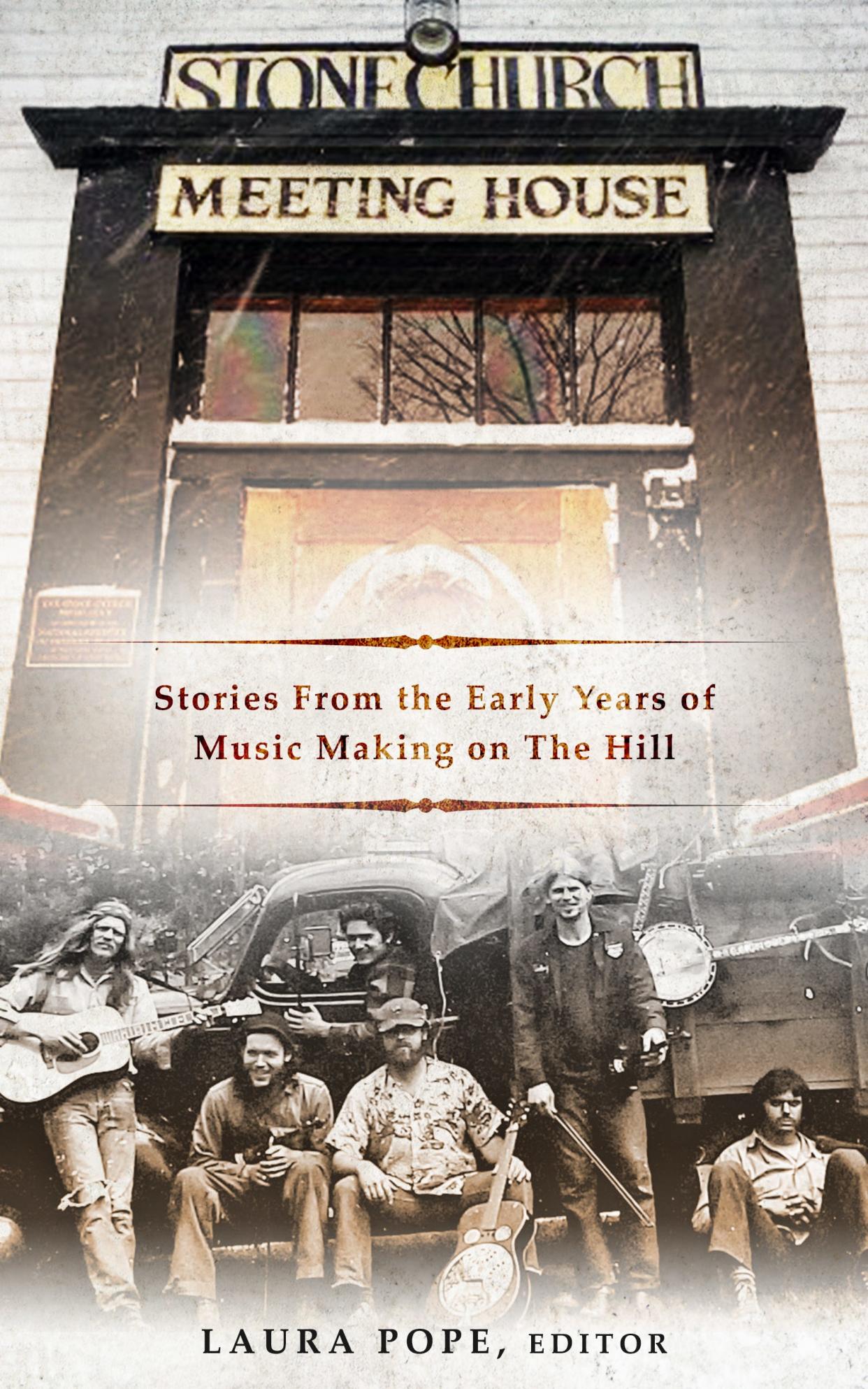New book traces Folk Music Movement into N.H.

NEWMARKET — “Stone Church Meeting House: Stories from the Early Years of Music Making on The Hill”,collected and edited by enduring arts reporter and historian, Laura Pope, is a compelling scrapbook/group memoir of stories, musical adventures, wanderings, and histories with vintage photos about Stone Church that explore the origin and evolution of a legendary music club and how it generated a regional music hub.
Stone Church instantly shone as a beacon for musicians from near and far. A young Bill Staines ventured north, out of the Boston/Cambridge folk club scene in the early 70s to take the Stone Church stage and promote his early albums. There, Patty Larkin honed and widened the scope of her performances as a band member, band leader (with Cercie Miller) and as a solo singer-songwriter. A fledgling group called Phish left their Vermont stomping grounds to perform five times at Stone Church to test their music and woo their growing audiences. The heralded songwriter, singer, guitarist and storyteller Bill Morrissey and guitar virtuoso Ed Gerhard left Pennsylvania for greener musical pastures in N.H., making Stone Church a regular stop. Lucy Kaplansky, Susanne Vega, and Shawn Colvin heard the Stone Church buzz and left New York to perform there. Members of the California-based Pousette-Dart Band (minus band leader Jon Pousette Dart) now living in Boston, formed The Pencils and held court at Stone Church.
Founded by three young friends in 1970, the Stone Church began with humble dreams and grew into something magnificent. Opened as a coffeehouse featuring live music and legendary Sunday Hoots, the music room surfaced during a musically momentous time in American history, when a growing acoustic music scene, coupled with youth culture movements, affordable housing, the Vietnam War, and numerous other cultural factors in the tumultuous late 1960s spread from Boston and Cambridge into the greater New England region. Readers will trace the emergence and particulars of how the predominant acoustic music scene in the late 60s and early 70s spread out of Boston and Cambridge to the more affordable Newburyport, Mass. (home of The Grog) and quickly to Newmarket, N.H. (home of Stone Church) and eventually into Portsmouth, N.H. (The Press Room) and beyond. A pivotal stage, Stone Church fed other emerging music rooms in the region that copied their Hoot Night format.
Musicians in the book describe the creation of two powerful music co-ops created by musicians– The Buck & Wing out of Boston and the Rosewood out of Newburyport, to book and promote the wellspring of musical talent surfacing at Stone Church, The Grog, and the music rooms in Boston and Cambridge in clubs and local, regional, and national festivals.
Stone Church quickly became an iconic sanctuary for established and emerging musicians and music lovers. Many in the book describe Stone Church as a safe and welcoming place to perfect their music, where they met others who loved performing as much as they did, where they could simultaneously perform solo, in in duos and in various bands and delve into multiple music genres.
In this select sample of stories and vintage photos from founders, owners, performers, and patrons covering the first 25 years of the Stone Church, Laura Pope has assembled a deep dive into the incredible history of this important creative space that continues to thrive today. Through the lens of these firsthand accounts, readers will also encounter an inspiring blueprint for grassroots music-making, and see that small towns, artist collectives, and fledgling venues can be integral parts of pursuing musical dreams. Many of the musicians profiled in the book describe the irresistible pull of music.
Spurred in part by a visit to the Stone Church as a young teen, editor Laura Pope has been working in arts journalism for more than two decades. This, her fifth book, is a wonderful tribute to the Stone Church’s lasting legacy as a significant stage for heralded national and regional performers such as Phish, Vassar Clements, Odetta, Bela Fleck, Pinetop Perkins, Beausoleil and countless others, including Bill Morrissey, Say ZuZu, Lunch at the Dump, Cormac McCarthy and Patty Larkin. With stirring stories, photographs, and a tangible reverence for history, Pope ensures that this important era won’t be forgotten, and in the process, sets the stage for the next generation of up-and-coming musicians to take this wisdom and inspiration into the future.
Celebrating its 53rd anniversary, Stone Church was recently inducted into the Music Museum of New England.
Stone Church Meeting House: Stories From the Early Years of Music Making on the Hill (ISBN: 9781958729410) can be purchased through retailers worldwide, including Barnes and Noble and Amazon. The paperback retails for $14.99 and the e-book retails for $5.99.
This article originally appeared on Portsmouth Herald: New book traces Folk Music Movement into N.H.

